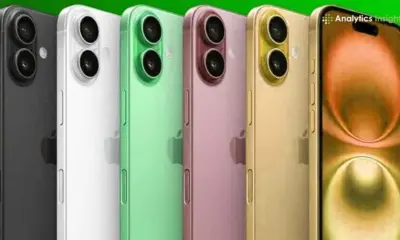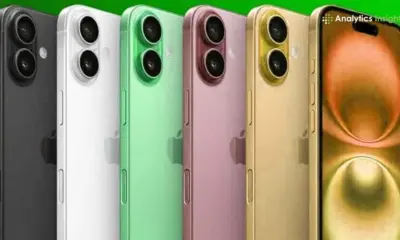Technology
Rethinking Webcam Covers: The Risks and Realities Unveiled

Plastic webcam covers surged in popularity during the 2010s as a simple solution to prevent hackers from spying on users through compromised devices. Concerns about privacy were valid, yet recent discussions, including warnings from Apple, suggest that these covers may be unnecessary and even harmful to your device. As technology evolves, understanding the implications of these accessories becomes crucial.
The Green Light Indicator and Modern Security
Modern MacBooks, particularly those equipped with Apple Silicon and Intel processors produced after 2008, feature a security design that prevents unauthorized access to the webcam. Specifically, a malicious actor cannot activate the camera without also turning on the green privacy indicator light. This hardware design change was implemented in late 2008, ensuring that the camera sensor and the indicator share the same physical circuit. The result is a system where the camera cannot receive power unless the LED is illuminated, effectively safeguarding against unauthorized access.
Prior to this redesign, Macs released before 2008 were vulnerable under certain advanced attacks, as noted in a paper by security researchers at Johns Hopkins University. This research highlighted the potential risks associated with older models, where the software tied the camera sensor and indicator together. As technology progresses, there remains no known malware capable of bypassing this robust hardware design in newer models.
The Risks of Webcam Covers
While privacy concerns drove the popularity of webcam covers, their use today raises significant risks. One major issue is the potential damage to the laptop’s display. Apple specifically warns against closing a MacBook with anything thicker than 0.1 mm—approximately the thickness of a sheet of paper—between the display and the chassis. Given the delicate nature of modern Retina panels, applying pressure to the screen with a cover can lead to cracks or other damage.
For instance, individuals who frequently use webcam covers may unknowingly place undue stress on one of the most fragile parts of the device. This is especially pertinent for users of the MacBook Air, who may already notice ghosting marks on their screens from pressure against the keyboard during transport. The risks posed by these covers can outweigh any perceived benefits, particularly for Mac users who prioritize device longevity.
In summary, adopting good cyber hygiene practices is more effective than relying on a webcam cover, especially for those using Mac devices. While the situation may differ for users of Windows laptops, the overall trend indicates that maintaining secure habits online is essential in safeguarding against potential threats. As technology continues to advance, it is vital to reevaluate the tools we utilize for privacy and security, ensuring they align with current best practices.
-

 Technology5 months ago
Technology5 months agoDiscover the Top 10 Calorie Counting Apps of 2025
-

 Technology3 weeks ago
Technology3 weeks agoOpenAI to Implement Age Verification for ChatGPT by December 2025
-

 Health3 months ago
Health3 months agoBella Hadid Shares Health Update After Treatment for Lyme Disease
-

 Health3 months ago
Health3 months agoAnalysts Project Stronger Growth for Apple’s iPhone 17 Lineup
-

 Health3 months ago
Health3 months agoErin Bates Shares Recovery Update Following Sepsis Complications
-

 Technology5 months ago
Technology5 months agoDiscover How to Reverse Image Search Using ChatGPT Effortlessly
-

 Technology3 months ago
Technology3 months agoElectric Moto Influencer Surronster Arrested in Tijuana
-

 Technology2 months ago
Technology2 months agoDiscover 2025’s Top GPUs for Exceptional 4K Gaming Performance
-

 Technology5 months ago
Technology5 months agoMeta Initiates $60B AI Data Center Expansion, Starting in Ohio
-

 Technology5 months ago
Technology5 months agoRecovering a Suspended TikTok Account: A Step-by-Step Guide
-

 Health5 months ago
Health5 months agoTested: Rab Firewall Mountain Jacket Survives Harsh Conditions
-

 Lifestyle5 months ago
Lifestyle5 months agoBelton Family Reunites After Daughter Survives Hill Country Floods





















